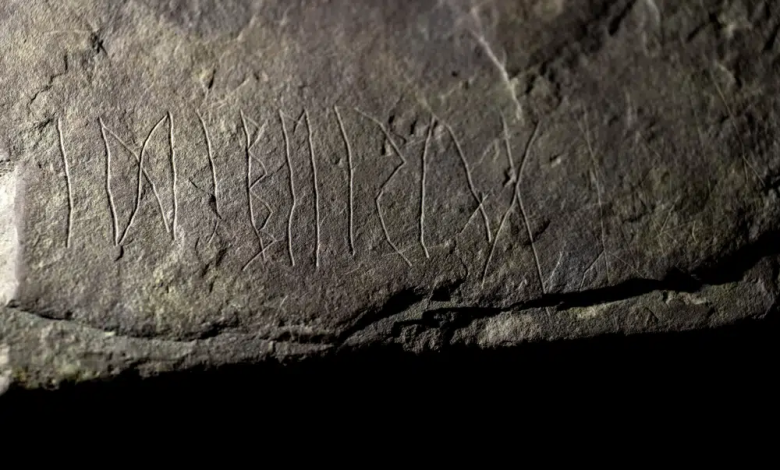Archaeologists in Norway discover the oldest known runestone in the world

Archaeologists in Norway announced on Tuesday that they have uncovered a runestone which they believe to be the world’s oldest. The inscriptions on the stone are believed to be around 2,000 years old and date back to the early days of runic writing. The flat, square block of brownish sandstone has carved symbols and marks, which may be the earliest examples of written words in Scandinavia, according to the Museum of Cultural History in Oslo. The Museum stated that the newly found runestone is “among the oldest runic inscriptions ever found” and “the oldest datable runestone in the world.”
According to Kristel Zilmer, a professor at the University of Oslo where the museum is located, the recent discovery of runes on stone from the early Iron Age will provide valuable insights into the use of runes during that period. This could potentially be one of the earliest examples of rune usage in Norway and Scandinavia on stone, as previous finds have primarily been on other types of objects such as bones. The oldest known runic find is on a bone comb discovered in Denmark. Zilmer speculated that the runes may have been carved using a knife or needle.
The discovery of a runestone was made during the fall of 2021, during an excavation of a grave located near Tyrifjord, west of Oslo. This region is known for several significant archaeological finds. The cremation pit that the runestone was found in contained burnt bones and charcoal, indicating that the runes were likely inscribed between A.D. 1 and 250. The researcher responsible for the discovery announced it on Tuesday, stating that they needed time to analyze and date the runestone. Measuring 31 centimeters by 32 centimeters, the stone features various inscriptions, some of which do not make linguistic sense. The front of the stone contains eight runes which spell out “idiberug,” a possible name for a woman, man, or family.
According to Zilmer, the discovery of the Svingerud stone is “the most sensational thing” he has encountered as an academic. Further research on the rock, which was found at the Svingerud site, is expected to yield valuable insights into the early history of runic writing. The stone will be on display at the Museum of Cultural History, home to Norway’s largest collection of historical artifacts, from January 21st for a month.




